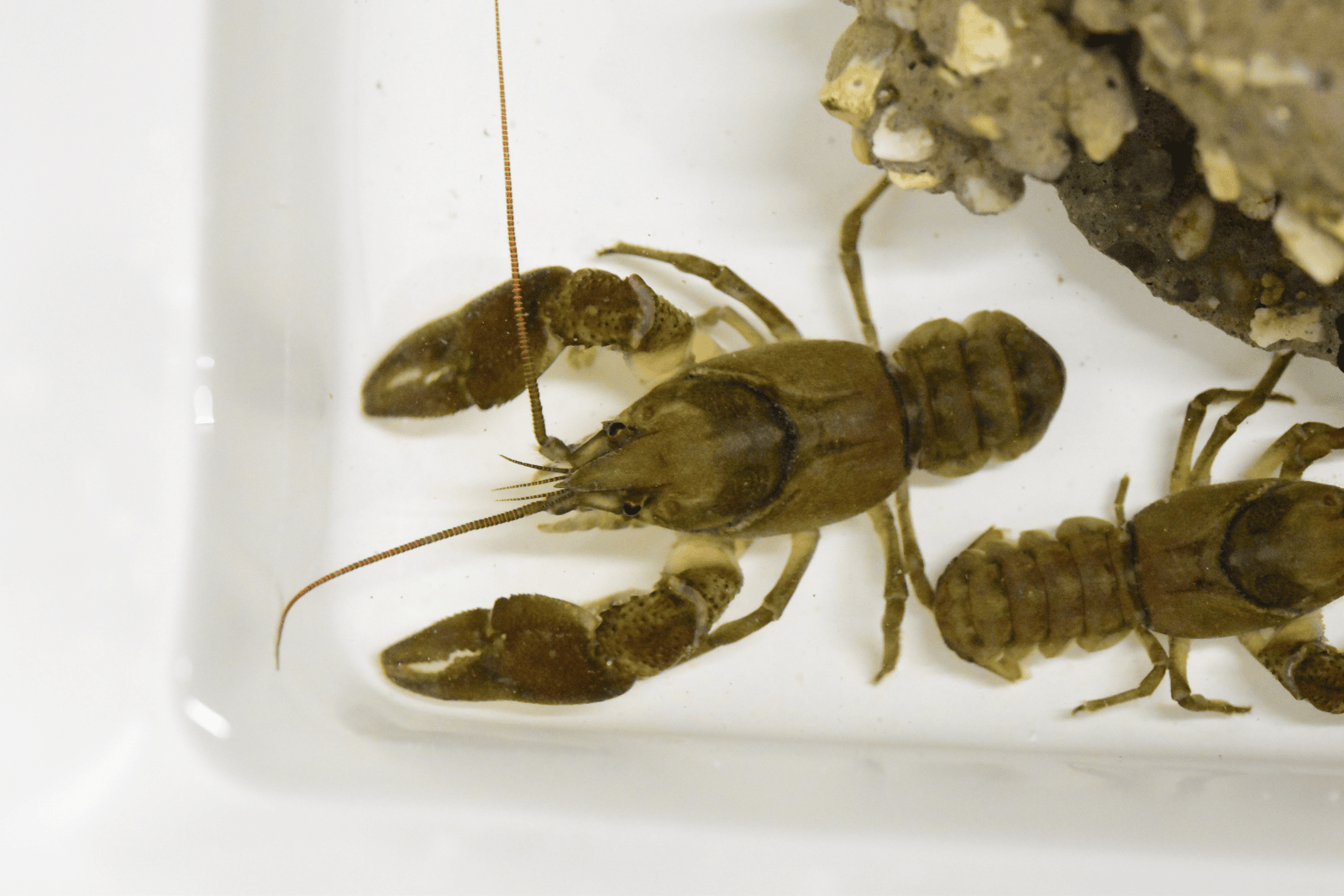Crayfish research: integrating welfare assessments in conservation translocations
Posted on: 16 July, 2025
At Bristol Zoological Society, we're committed to the highest standards of animal welfare, both within Bristol Zoo Project and in our conservation programmes.

We advise and provide animal welfare training for other zoos, in the UK and internationally, and have an award-winning, industry-leading, welfare assessment process at our zoo. We also work to understand and mitigate the potential impacts of our conservation interventions on the welfare of all animals that are part of our national and international conservation programmes.
As part of our native species conservation programme, we've been working to protect the Endangered white-clawed crayfish since 2008. Working with several other zoos and organisations, we work to protect and restore this species’ habitat, and to return it to areas it has disappeared from. We rear the offspring of wild-caught females in our hatcheries and release them into the wild, an intervention known as conservation translocation.
Over the years, we have released into the wild over 3,000 crayfish that were born and reared at our hatcheries. However, the impact of these translocations on the welfare of the crayfish, both released and resident (those already found within the release area), has received little attention.

For over a year, our Animal Behaviour and Welfare and Native Species conservation teams have been working together to develop and conduct a research project assessing the welfare of crayfish during a conservation translocation, funded by the Wild Animal Initiative. With the help of two research assistants, we marked and conducted behavioural observations of both wild resident crayfish in a stream in Somerset, and captive-reared crayfish in our hatchery at the zoo. We then released the captive-reared crayfish into the stream, and continued monitoring both resident and released animals.
Our results suggest the release did affect the behaviour of the resident crayfish, with an increase in refuge use and aggression, which potentially indicates a negative impact on welfare. We also detected some differences in behaviour between the captive-reared population and their wild counterparts, before and after release.
These findings suggest the captive environment can be optimised to further allow for the development and expression of welfare-enhancing natural behaviours. Conversely, the resident and released crayfish that were recaptured for post-release assessment showed healthy growth rates and body condition. This indicates that the disturbance caused by the release did not substantially affect their physical and physiological function.
This pilot study provides useful insights into crayfish welfare and highlights the importance of assessing the welfare of animals that are part of conservation translocations. With almost 50,000 species currently listed as threatened in the IUCN Red List of Threatened Species, there is a growing need for conservation interventions such as translocations.
However, we must ensure animal welfare is thoroughly considered in these interventions. As leaders in both conservation and animal welfare, we are planning to expand this work in the future and will be using this study’s findings to further implement robust welfare assessment tools across our conservation programmes.

Want to help us save wildlife?
Become a member today for a year of wild adventure, and help protect the animals and habitats you love by supporting our conservation charity.

